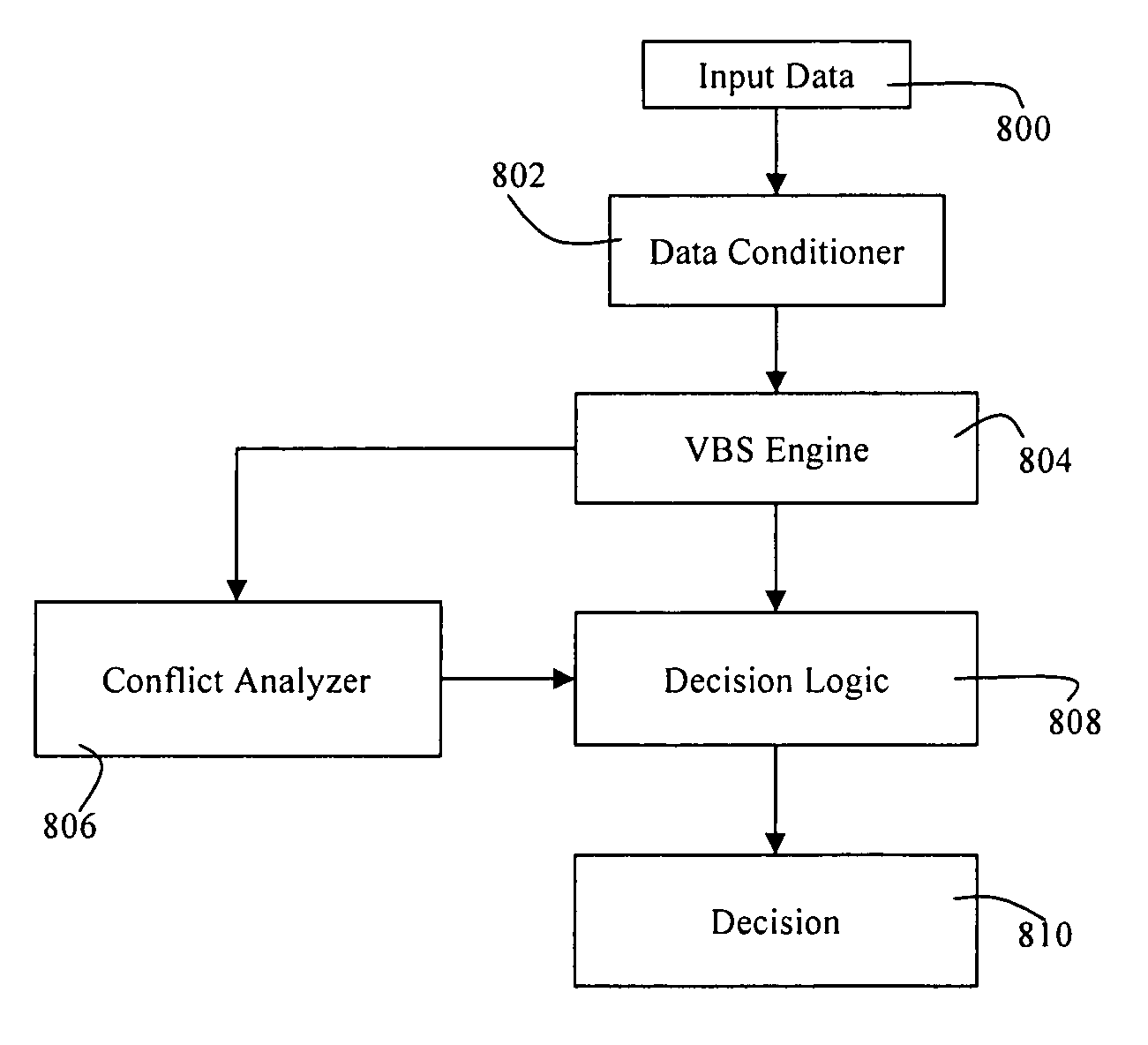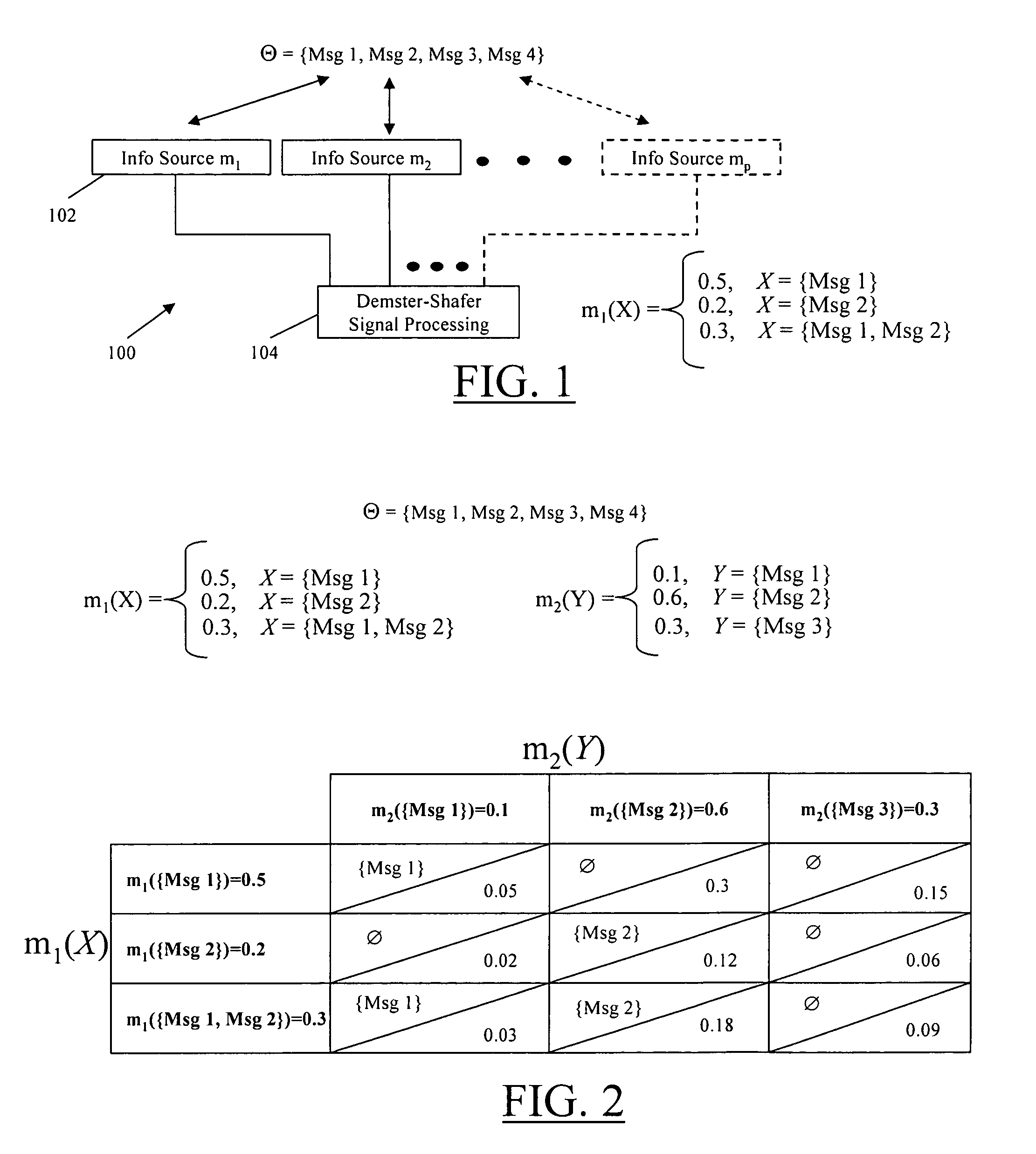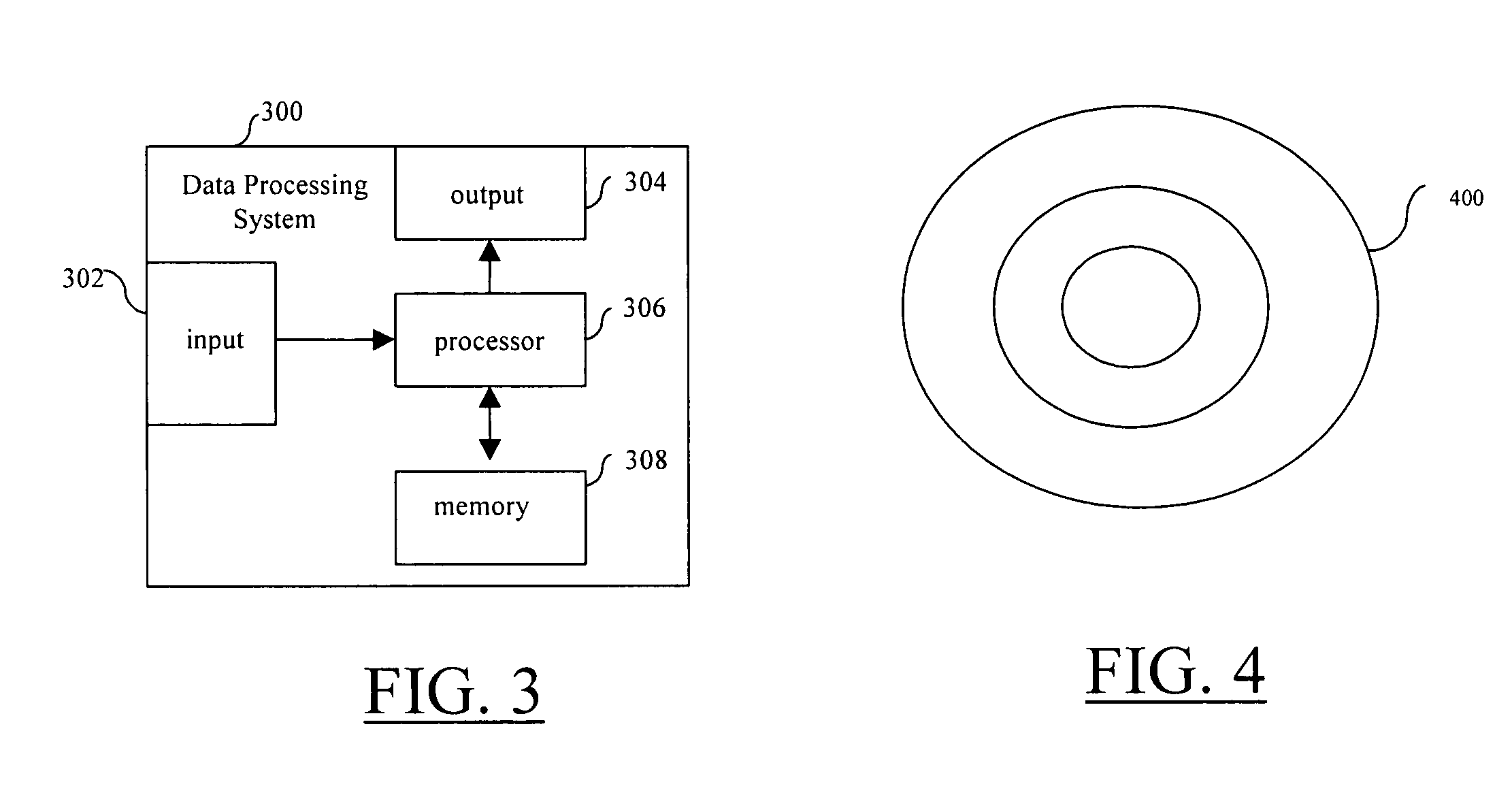Methods for monitoring conflicts in inference systems
a technology of inference system and conflict monitoring, applied in the field of monitoring belief conflict, can solve problems such as conflict, conflict, and combined belief functions that contradict each other, and achieve the effect of reducing computation costs in performing belief inferen
- Summary
- Abstract
- Description
- Claims
- Application Information
AI Technical Summary
Benefits of technology
Problems solved by technology
Method used
Image
Examples
Embodiment Construction
(1) Introduction
[0106]FIGS. 1 and 2 are mere exemplary, specific illustrations that teach how the stated Dempster-Shafer (D-S) formulas can be used, and are therefore exemplary teaching tools only, and should not be limiting. FIG. 1 is an exemplary illustration of an information system 100 that includes a number of information sources 102 and a Dempster-Shafer (D-S) signal processing center 104. The information sources 102 may take a wide variety of forms such as sensors or communication antennas capable of detecting an object, a message, or an event and reporting information to the D-S signal processing center 104. Alternatively, the information sources 102 may be rules or opinions gathered from individuals, typically experts in a particular knowledge domain. The outputs of the information sources 102 may comprise signals, which represent the event (e.g., sensed light, received message, opinion, etc.) being observed. These outputs couple with the signal processing center 104, which...
PUM
 Login to View More
Login to View More Abstract
Description
Claims
Application Information
 Login to View More
Login to View More - R&D
- Intellectual Property
- Life Sciences
- Materials
- Tech Scout
- Unparalleled Data Quality
- Higher Quality Content
- 60% Fewer Hallucinations
Browse by: Latest US Patents, China's latest patents, Technical Efficacy Thesaurus, Application Domain, Technology Topic, Popular Technical Reports.
© 2025 PatSnap. All rights reserved.Legal|Privacy policy|Modern Slavery Act Transparency Statement|Sitemap|About US| Contact US: help@patsnap.com



